|
Home
Definition
Treatment
Genetics
The Gunn rat
Bilirubin toxicity
Phototherapy
Crigler-Najjar and pregnancy
Crigler-Najjar type II
Bilirubin Levels & Drugs
International Crigler-Najjar Registry and Associations
Links
News
Album
Updates
For comprehensive answers about phototherapy for CN patients please refer to the following site: www.criglernajjar.info
|
|
 PHOTOTHERAPY for CRIGLER-NAJJAR SYNDROME:
PHOTOTHERAPY for CRIGLER-NAJJAR SYNDROME:
 The mechanism of bilirubin excretion during phototherapy. BR: bilirubin. PBR: photobilirubin (from MacDonagh et al, Science 1980).
The mechanism of bilirubin excretion during phototherapy. BR: bilirubin. PBR: photobilirubin (from MacDonagh et al, Science 1980).
Current treatment for Crigler-Najjar patients is based upon phototherapy (emission range: 400-525 nm, peak emission: 450-460 nm). Patients undergo to phototherapy sessions (about 10 hours/day). Light energy is absorbed by bilirubin as it circulates in skin capillaries, resulting in conversion of insoluble bilirubin to photoisomers (referred also as photobilirubin and lumirubin) which are water-soluble and readily excreted.
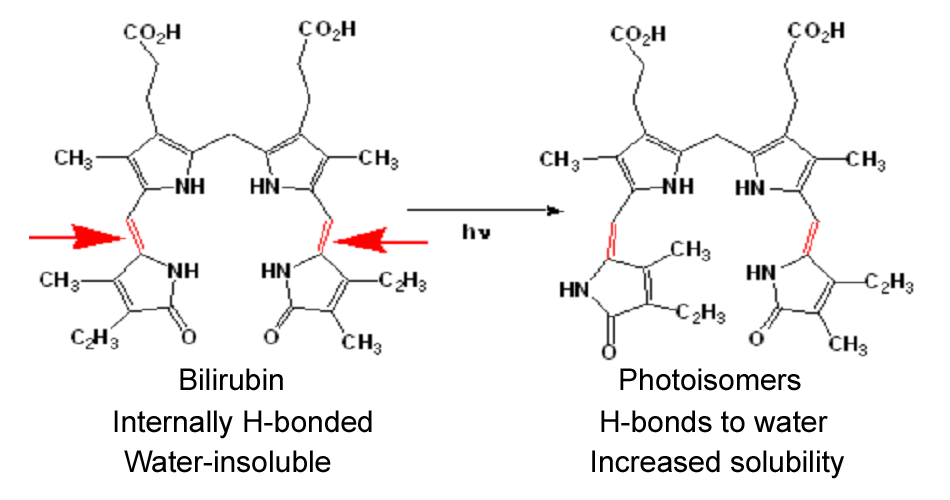 Bilirubin photoisomerization.
Bilirubin photoisomerization.
Different parameters are to be considered about phototherapy:
LIGHT SOURCE:
Philips Special Blue lamps F20T12/BB or F40/BB (which are different from "regular" blue lamps labeled F20T12/B) or Philips
TL 52 lamps are generally used as light source.
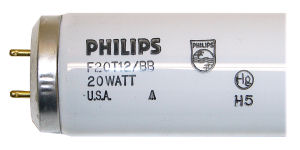
Factors affecting the effectiveness of phototherapy:
-
Lamps life (change lamps after about 1,000 operating hours)
-
Distance from the light source (ideally 4-8 inches, 10-20 cm). The more the distance, the less is the light energy hitting the body surface.
-
Skin exposure to light (not less than 40% of body surface has to be exposed to light)
-
Surface of the skin exposed/body weight ratio
-
Pigmentation
-
Duration of the exposure (the effectiveness of phototherapy is to some extent proportional to the phototherapy time)
-
Use of reflective surfaces around the bed and white sheets to reduce absorption
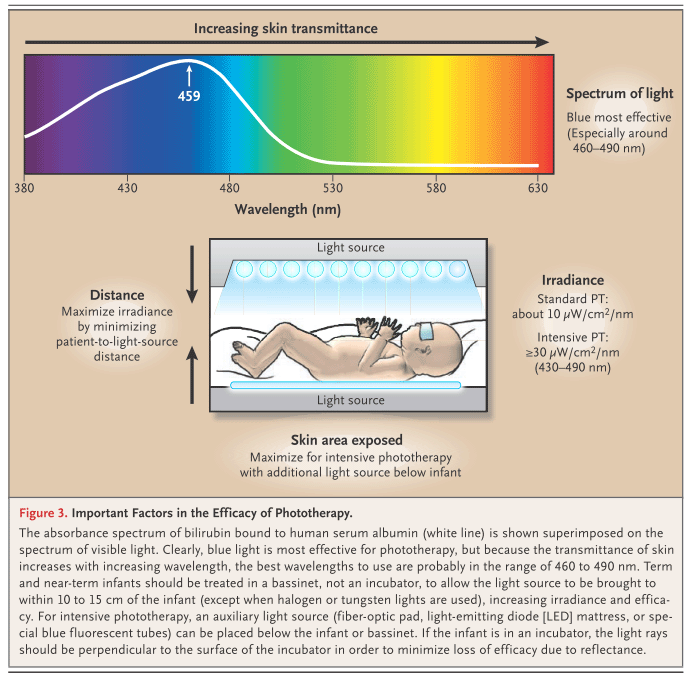
From Maisels and McDonagh, N. Engl. J. Med. 2008; 358:920-8.
In the past years, technology of phototherapy devices moved from fluorescent lamps to LED as source of light.
The efficacy of LED lights in reducing total serum bilirubin levels is comparable to that of conventional light sources (fluorescent or halogen lamps).
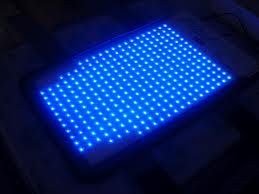
Moreover, compared to conventional fluorescent lamps, LED have the following advantages:
Emission peak precisely around the bilirubin absorption peak (reducing problems arising from infra-red and ultra-violet light exposure)
Prolonged lifetime (up 20,000-50,000 hours)
Energy saving (more cost-effective)
Reliability (same emission profile throughout LED lifetime)
Easier to build phototherapy devices (even including LED in blankets)
Reduced heat emission (therefore can be applied closer to the body, increasing efficacy)
Exhausted LED are more easily disposable
HOW TO BUILD A PHOTOTHERAPY UNIT: Another problem to face is how to build a phototherapy unit for adult patients with limited costs.
Here we show how some ingenious dads have solved the
problem of home phototherapy for their children
(Click on the picture to see a larger view)
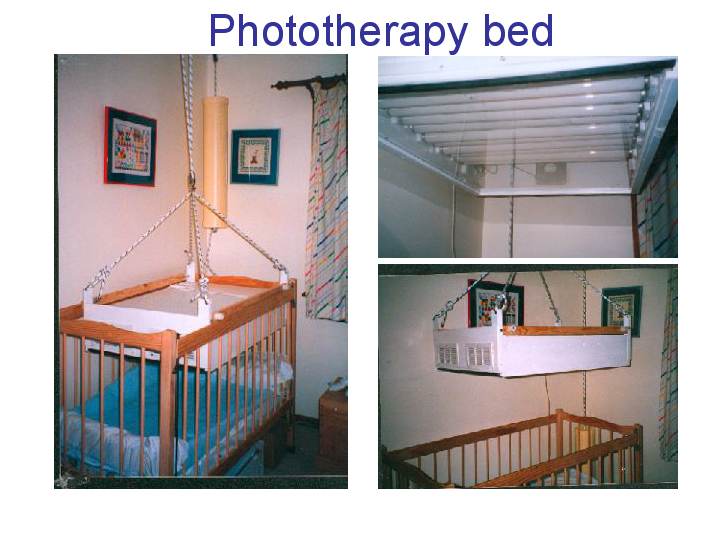
Made by Alex (e-mail: alexcar@bigpond.com)

Made by Alex (e-mail: alexcar@bigpond.com)

Made by Gaia's dad (e-mail: info@ciami.it
)
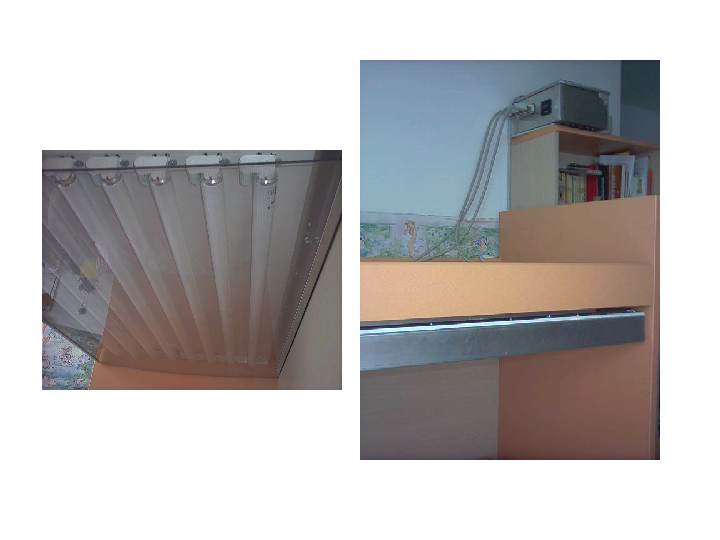
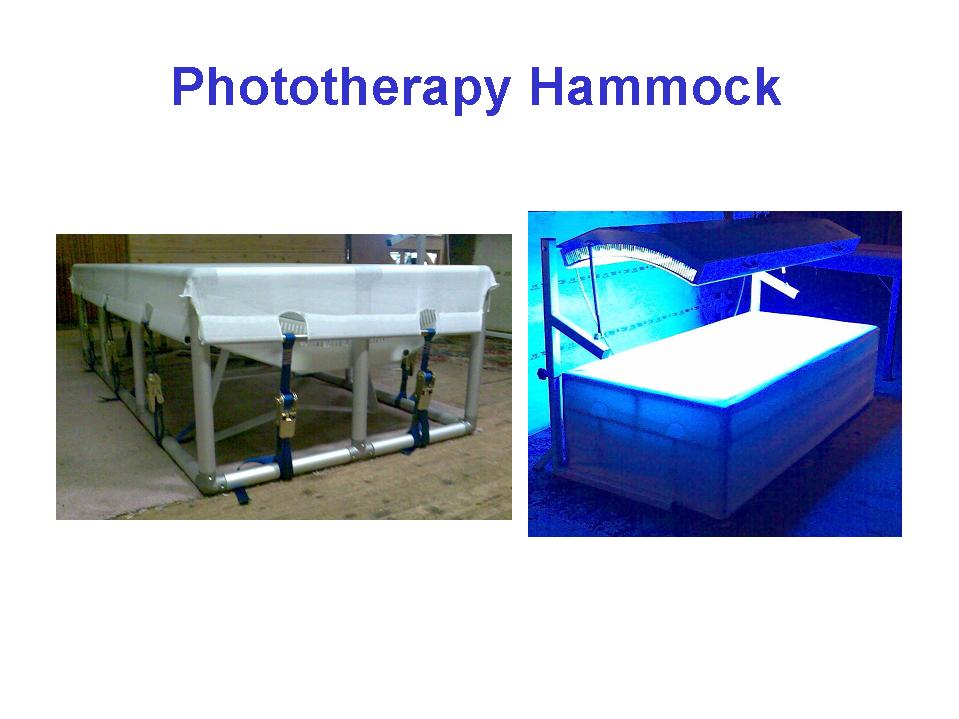
Made by Graham (e-mail: Graham)
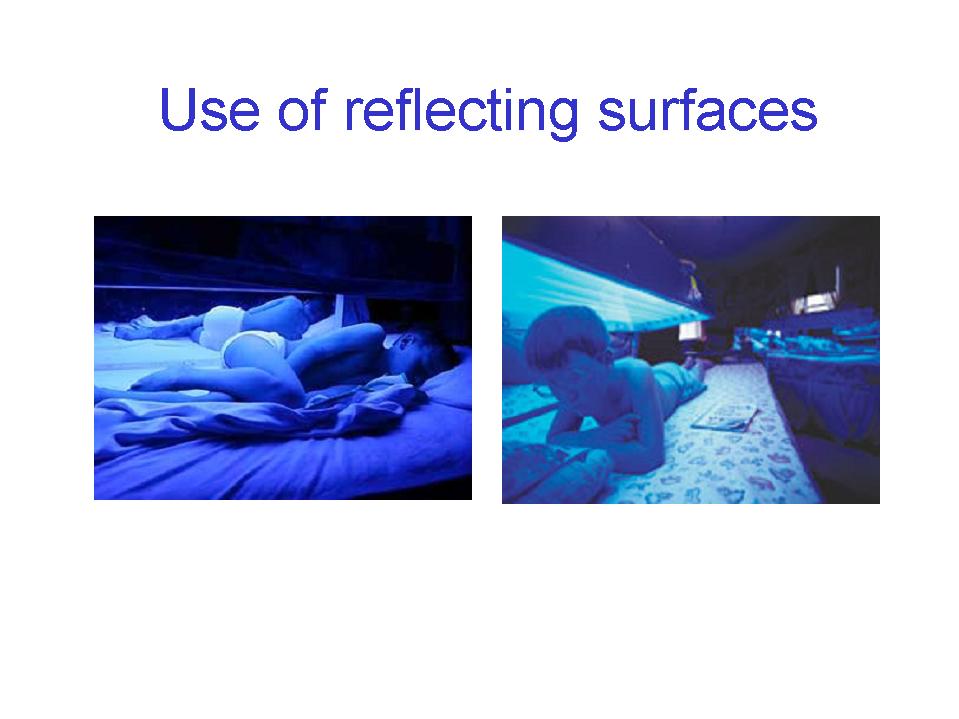

Made by The University of Twente, The Netherlands
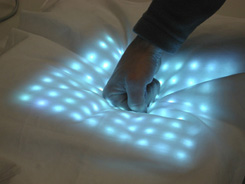
Ledwrap made by Philomeen Engels

LED blanket by Smart Texiles
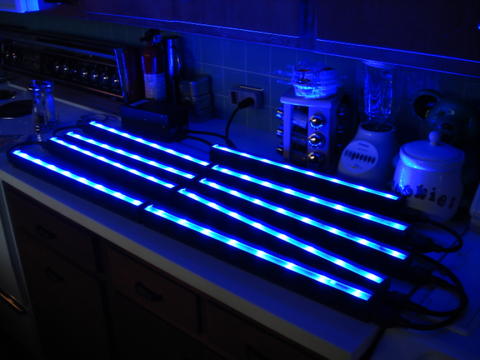
Home phototherapy system using Royal Blue power LEDs made by Charles Murphy (e-mail: Charles Murphy)
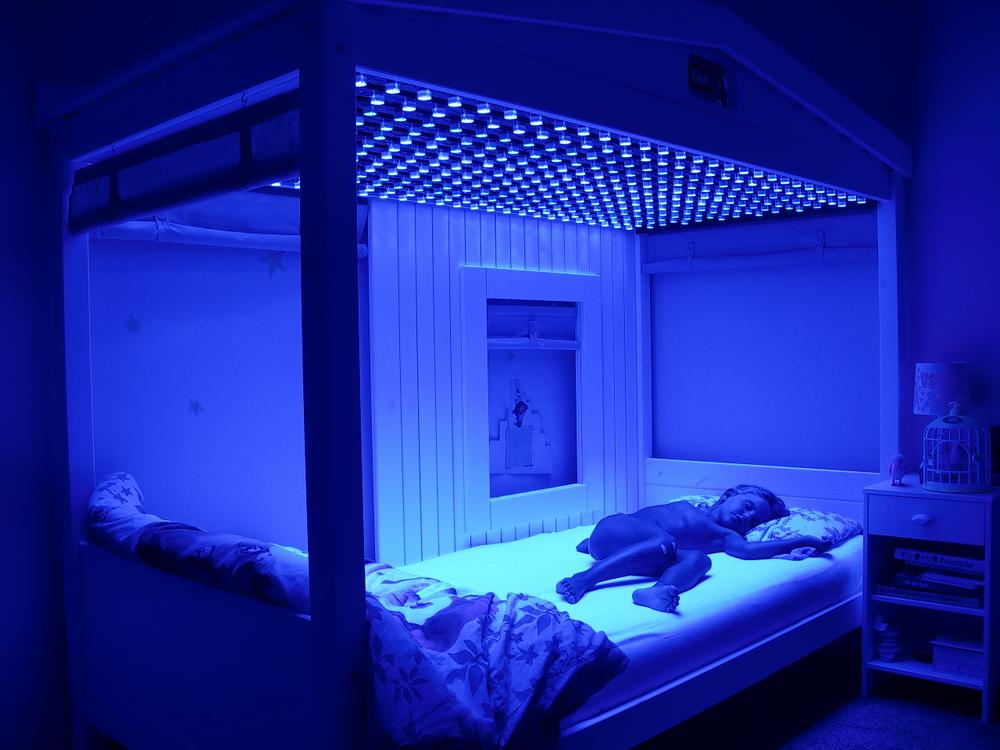
Bililed Blue Night phototherapy unit using LEDs

Led lamp by Dutch Medical Technology

Net mattress
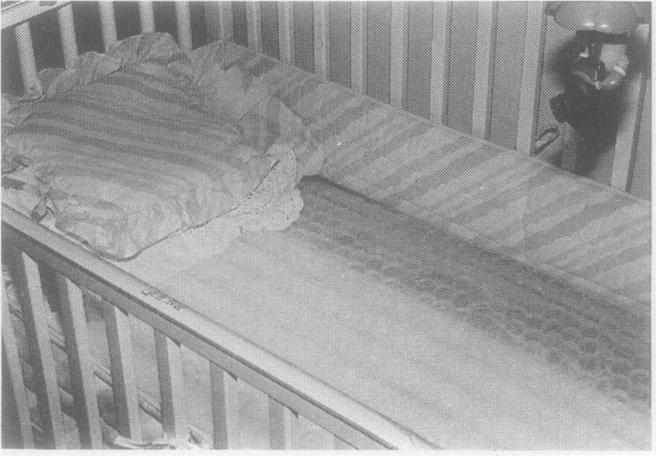
Phototherapy crib mattress from Archives of Disease in Childhood
 
PREVIOUS PAGE NEXT PAGE

|